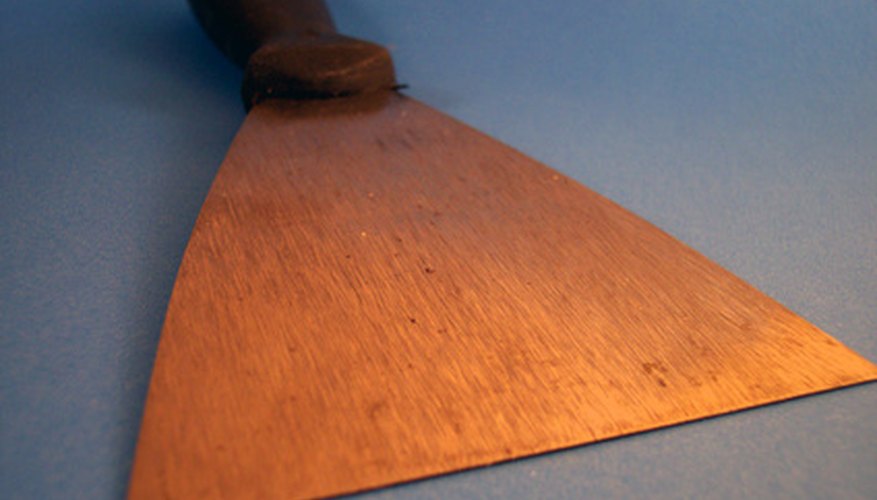Modern paint sprayers are much easier to use than their older counterparts. Unfortunately, when they fall into the hands of inexperienced do-it-yourselfers, unexpected messes sometimes occur. If you need to remove fence paint overspray from surfaces adjacent to your fence, you're in luck, as fence paint is not oil based. This characteristic makes it much easier to clean. Employ the proper removal tools and procedures appropriate for the type of surface you are dealing with, or you may accidentally create further damage.
- Modern paint sprayers are much easier to use than their older counterparts.
- If you need to remove fence paint overspray from surfaces adjacent to your fence, you're in luck, as fence paint is not oil based.
Scrape fence paint overspray from window glass, using a razor blade. Hold the blade at a low angle as you scrape.
Scrape fence paint overspray from wood surfaces adjacent to the fence using a plastic putty knife. Scrape along with the wood grain to avoid splintering.
Use a wire brush and 80-grit sandpaper to remove the overspray from durable surfaces, such as metal, brick and stone.
TIP
If you were unable to remove all of the fence paint overspray, wipe off the remaining residue using a rag dampened with white spirit. Dry the white spirit from painted surfaces immediately after application, using a dry rag, or the underlying finish may slightly fade.
WARNING
Don't use a metallic putty knife on wood surfaces adjacent to the fence, or you may create abrasion scars. Don't use lacquer thinner to clean fence paint overspray from painted surfaces, as it may damage the underlying finish.
